Nisqually National Wildlife Refuge
April 9, 2005
Although the morning weather looked promising, I was certain that it would turn sour quickly if I headed into the mountains and therefore decided to take a short walk through in a local wildlife refuge instead of doing something more active. Besides, I had had such a wonderful time out at Potholes State Wildlife Refuge a few months ago that the idea of going to a federal refuge was appealing. NIsqually is only about ten miles from my apartment, giving me a chance to sleep in a bit before picking up some coffee and a pastry from a local coffee shop and hitting the road. The far parking lot was already filling up when I arrived shortly after 9 am. I would definitely not be alone.
I hit outer loop trail (Brown Farm or the Dike path), which began as a long boardwalk which carefully separated me (and everyone else) from the natural setting. Not especially happy with this, I figured, quite correctly, that the board walk would soon end as the budget for such things must be limited.

This area is known for its fine bird watching and the good weather brought the bird people out in droves. Everyone, it seemed, had some sort of camera and massive lens attached to a tripod. The board walk ended near the Nisqually river and I was again free to poke about in the bushes when I saw something interesting, although signs discouraged this. The Olympics could be seen in the distance, sporting their first white coating of the season. Luxury homes could also be spotted. A small trail led off to one side, marked with a "Primitive" sign, and I followed it through some mud out to a small opening in the riparian forest. Various birds were out and about, including some large crane or heron like birds, in addition to the standard ducks, geese, and gulls.

When I returned to the main path, I began to encounter more and more bird watchers, most of them sporting massive lenses attached to expensive cameras, all mounted on tripods. One group, being led about by two park rangers or volunteers of some sort, had enough camera gear on them to feed an Indian village for about a decade. The smallest lens in the party was about the size of my upper leg. I made a conservative estimate that there was enough camera gear here to feed a small Indian village for about a decade. All to take long distance pictures of birds. Fabulous.
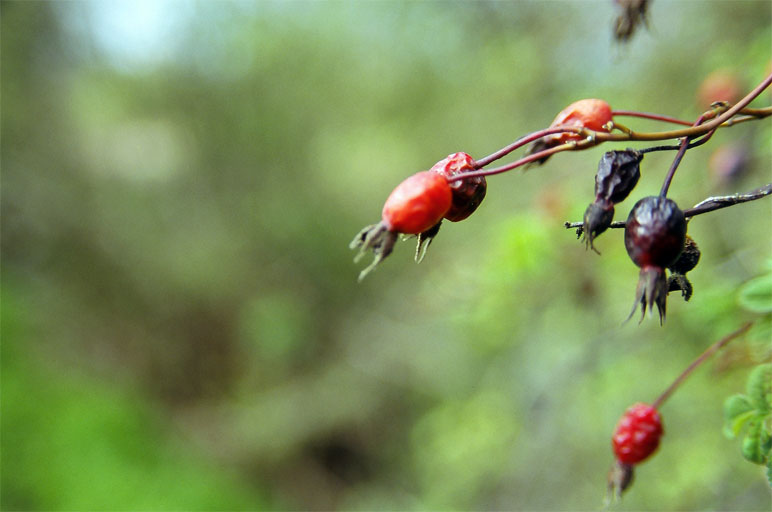
I played leap frog with the Indian village group for a while as we each stopped to take various pictures, trying to express some sort of artistic talent, but mostly failing. I was finding it difficult to take a picture of anything interesting as there just wasn't much emotion involved in the area. Sort of like going to an art exhibit and taking pictures of the displays.
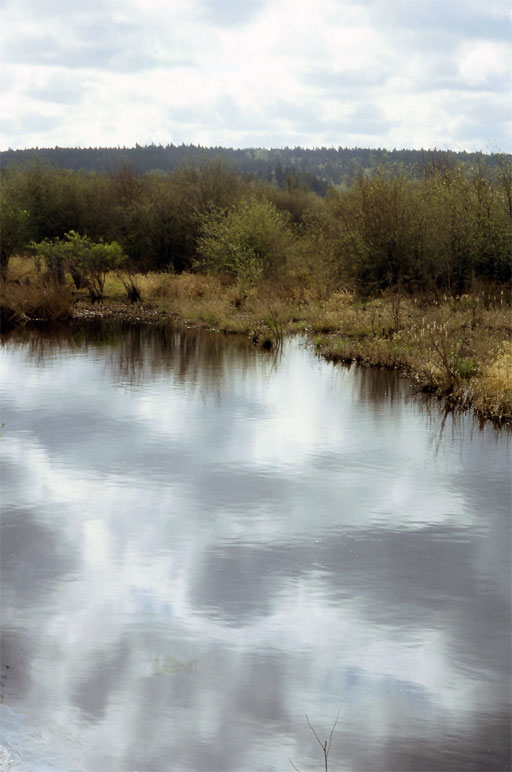
The Indian village group stopped at a look out tower to take photos of nearby Puget sound from an elevation and I was able to get some distance between us. I wanted to go out to the actual thing, rather than see it from a far, but there were several signs telling me that the area was closed to the public. Rubbish! I found a small break in the trees and scrambled down the dike where there was no sign and a bit of flagging tape seemed to indicate some sort of path. As I walked through the squishy land, I passed shot gun shell after shot gun shell, indicating the popularity of the (closed) area with hunters in the fall. All that was missing was a few beer cans. Surely if hunters could come out and shoot things, I felt no qualms about coming out for a few minutes and exposing some slides.
I reached the start of the mud flats that seem to mark the high tide area and took a few photos out toward the sound and then started back. While I would have liked to have had a sit here, I was blocking the views for the people on the observation deck and didn't want to annoy them too much.
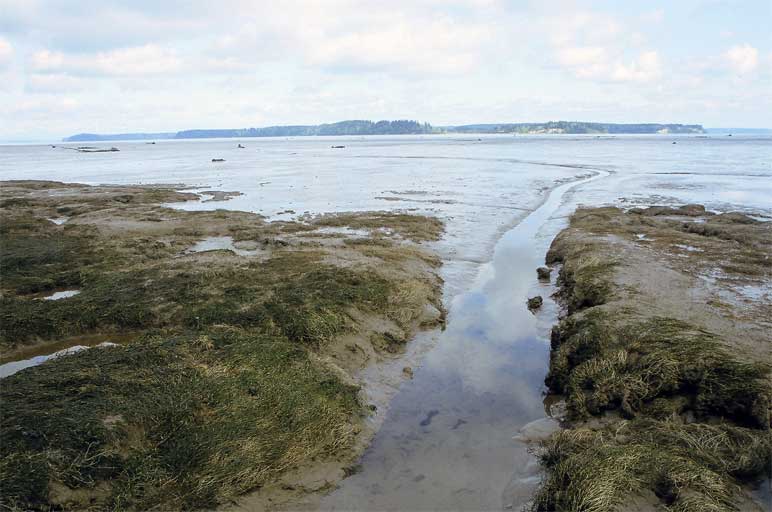
I walked back to the dike and then found a nice, dry spot a few yards from the dike trail to rest and look at the Sound. There is something very peaceful about salt water viewed from the safety of solid ground and not even the sight of the trophy homes less than a half mile away could disturb me. I laid back in the soft, green grass and looked up at the clouds as they moved by. A gull was walking on a small bit of mudflat near me hunting, and occasionally finding, worms. I smelled the odd mixture of floral and salt air and let the breeze carry away...what?
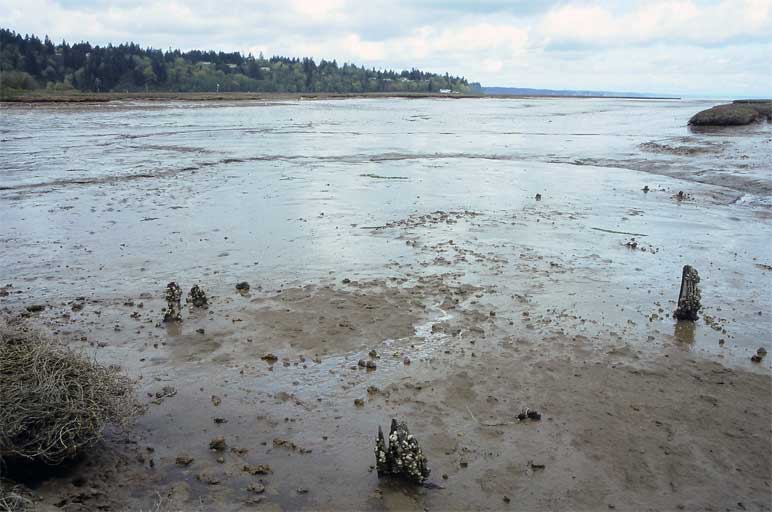
"Excuse me! Can you come over here?"
The voice boomed from the dike. Broken, I looked over and saw the Indian Village group with their ranger guide. I grabbed my back and started over to the dike.
"Do you have any scientific authorization that allows you to be off the trail?" boomed the voice from the sixty year old.
"No," I replied as I scrambled back up to the dike.
"Then you can't leave the trail. There are signs everywhere."
I acknowledged that there were and mumbled a feeble excuse involving flagging tape. I think my un-repentant manner raised the hackles of the ranger somewhat.
"I know that you went farther out and I took a picture to prove it," asserted the ranger.
I smiled and said nothing.
"Stay on the trail from now on," commanded the ranger.
I smiled and nodded and said ok.
I sat just off the trail in the grass near the ranger's feet and pulled out a granola bar to snack on. The Indian Village group moved off a few yards and waited for the ranger to call in the incident.
"Found the guy who went off trail...He's wearing a blue windbreaker...Should be close to you soon...Roger that" the ranger said into a small black box in his hand.

I sat in the grass for a while and the Indian Village moved off, wondering if a ranger might follow me the rest of the way waiting for me to step off the trail again, or perhaps write me a ticket (few rangers have law-enforcement authority). I certainly hoped so, as it might give them something interesting to do. A friendly woman came by and struck up a conversation about Sand Cranes and other birds that she had seen here, helping me to identify some of the local species. I eventually picked myself up off the ground and began strolling again. I quickly ran into the Indian Village group at a chained off area taking pictures of something. I looked into the water toward where they were looking, but couldn't spot anything more interesting than a few ducks. The chained off area was a maintenance road for the refuge, and it was, according to the sign, closed to public so that the birds would not be disturbed. I took a picture of the sign and pondered this as the racket of I-5 cascaded across the water. The ranger said that I could join them if I wanted, to which I smiled and said I just wanted a picture.
I walked along, passing group after group, although the birders were decreasing in number and being replaced by families out for a stroll. I thought this a fine idea and was glad to see them out enjoying their land and getting some exercise as well.
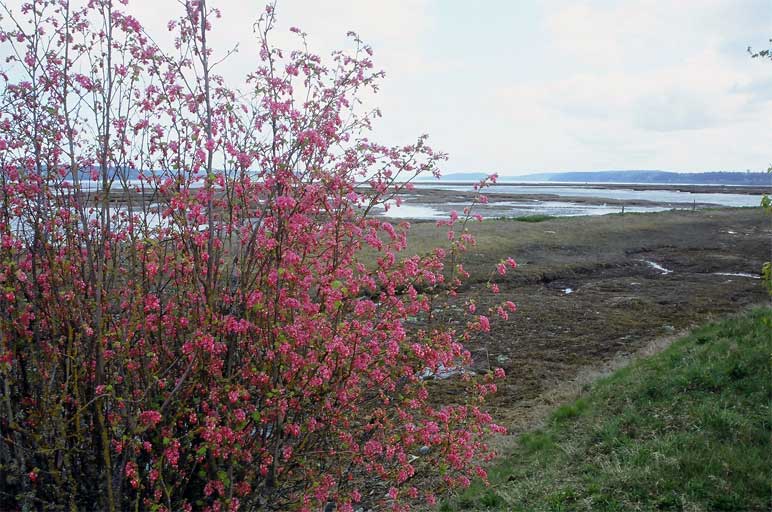
As I began to near the end of the trail the sound of I-5 intensified and I thought about how different Nisquallly was from Potholes. I had been the only person at Potholes and I could go where ever I wanted without sign or fence tellling me otherwise. Potholes was freedom and open space. Nisqually, while pretty and scenic, was the exact opposite. Nisqually was closed in and restricted. It made for good family walking, but wasn't quite what I was looking for.
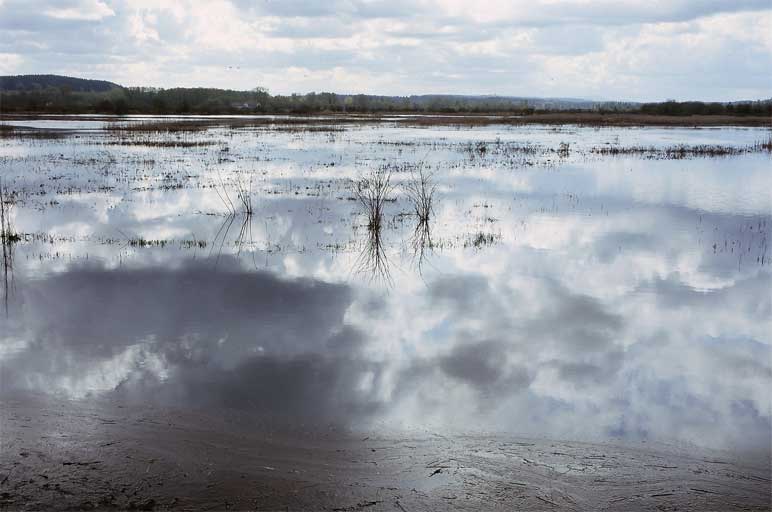
Logistics
From Lakewood, drive I-5 south to exit #114, which is signed Nisqually. At the end of the off ramp, make a right and follow the signs to the refuge. There are two parking lots on either side of the visitors center. Park in the very first one and you'll spot the Brown Farm, or Dike, Trail immediately (it is the large board walk). The Brown Farm/Dike route is a little over 5 miles and is flat the entire way. After the boardwalk gives out, the dike trail is sufficiently road like that my Camry could drive it without issue. The trail loops around the wetlands and returns to the visitors center. You'll have to pay a $3 fee per family (as the sign says) or have some sort of pass (Golden Eagle works). The refuge closes at sundown.









